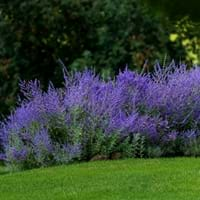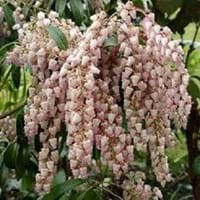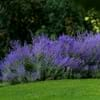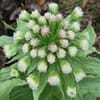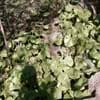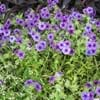Life Span
Perennial
Perennial
Type
Flowering Plants
Broadleaf Evergreen
Origin
Hybrid origin
Eastern Asia
Types
Perovskia atriplicifolia LACEY BLUE, Perovskia atriplicifolia ‘Rocketman’
Mountain Fire , Variegata , Purity , Red Mill
Number of Varieties
Not Available
Habitat
Not Available
Lowland evergreen rainforest, Shaded sites
USDA Hardiness Zone
4-9
5-9
AHS Heat Zone
9-6
Not Available
Sunset Zone
2a, 2b, 3a, 3b, 4, 5, 6, 7, 8, 9, 10, 11, 12, 13, 14, 15, 16, 17, 18, 19, 20, 21, 22, 23, 24
21,22
Habit
Clump-Forming
Upright/Erect
Flower Color
Lavender, Blue Violet
White, Red, Light Pink, Hot Pink
Flower Color Modifier
Bicolor
Bicolor
Fruit Color
Not Available
Tan
Leaf Color in Spring
Gray Green, Silver
Red, Green, Dark Green, Pink, Bronze
Leaf Color in Summer
Gray Green, Silver
Green, Dark Green
Leaf Color in Fall
Gray Green, Silver
Green, Dark Green
Leaf Color in Winter
Silver
Green, Dark Green
Leaf Shape
Grass like
Lanceolate to elliptical
Plant Season
Spring, Summer, Fall
Spring, Summer, Fall, Winter
Sunlight
Full Sun
Full Sun, Partial Sun, Partial shade
Type of Soil
Loam, Sand
Loam
The pH of Soil
Neutral, Alkaline
Acidic
Soil Drainage
Well drained
Well drained
Bloom Time
Summer, Late Summer, Early Fall, Fall
Early Spring, Late Winter
Tolerances
Drought, Salt
Deer resistant, Light Frost
Where to Plant?
Container, Ground, Pot
Ground
How to Plant?
Stem Planting
stem tip cuttings
Plant Maintenance
Low
Medium
Watering Requirements
Allow soil to be completely dry in between waterings, Do Not over Water
Keep the Soil well drained, Requires consistently moist soil
In Summer
Lots of watering
Lots of watering
In Spring
Moderate
Moderate
In Winter
Average Water
Average Water
Soil pH
Neutral, Alkaline
Acidic
Soil Type
Loam, Sand
Loam
Soil Drainage Capacity
Well drained
Well drained
Sun Exposure
Full Sun
Full Sun, Partial Sun, Partial shade
Pruning
Prune in early spring, Prune regularly
Prune after flowering, Remove damaged leaves, Remove dead branches, Remove dead leaves
Fertilizers
All-Purpose Liquid Fertilizer
All-Purpose Liquid Fertilizer, fertilize in spring, fertilize in winter
Pests and Diseases
Chlorosis, Red blotch
dieback, Leaf spot, Mites, Soft scales
Plant Tolerance
Drought, Salt
Deer resistant, Light Frost
Flower Petal Number
Single
Single
Fragrant Bark/Stem
Yes
No
Foliage Texture
Fine
Medium
Foliage Sheen
Matte
Glossy
Attracts
Butterflies
Birds, Butterflies, Hummingbirds, Moths
Allergy
Skin irritation, Toxic
Not Available
Aesthetic Uses
Landscape Designing
Beautification, Cottage Garden, Ornamental use, Showy Purposes, Wild gardens
Beauty Benefits
Not Available
Not Available
Environmental Uses
Insect Repellent
Air purification
Medicinal Uses
Treating fever
No Medicinal Use
Part of Plant Used
Flowers, Leaves
Not Applicable
Other Uses
Culinary use, Oil is used in mosquito repellents, Used as Ornamental plant
Not Available
Used As Indoor Plant
No
No
Used As Outdoor Plant
Yes
Yes
Garden Design
Dried Flower / Everlasting, Cutflower, Feature Plant, Foundation, Mixed Border
Feature Plant, Foundation, Hedges, Mixed Border, Screening, Wind Break, Topiary, Bonsai, Espalier
Botanical Name
Perovskia atriplicifolia
PIERIS japonica
Common Name
Longin Russian Sage, Russian Sage
Japanese Andromeda
In Hindi
Russian Sage
Japanese pieris
In German
russische Sage
Japanese pieris
In French
sabio ruso
Japanese pieris
In Spanish
Sage ruso
Japanese pieris
In Greek
Ρωσική Sage
Japanese pieris
In Portuguese
Sábio russo
Japanese pieris
In Polish
rosyjski Sage
Japanese pieris
In Latin
Russian Sage
Japanese pieris
Phylum
Magnoliophyta
Magnoliophyta
Class
Magnoliopsida
Magnoliopsida
Family
Lamiaceae
Ericaceae
Clade
Angiosperms, Asterids, Eudicots
Angiosperms, Asterids, Eudicots
Subfamily
Not Available
Vaccinioideae
Number of Species
Not Available
Not Available
Importance of Russian Sage and Japanese Pieris
Want to have the most appropriate plant for your garden? You might want to know the importance of Russian Sage and Japanese Pieris. Basically, these two plants vary in many aspects. Compare Russian Sage and Japanese Pieris as they differ in many characteristics such as their life, care, benefits, facts, etc. Every gardener must at least have the slightest clue about the plants he wants to plant in his garden. Compare their benefits, which differ in many ways like facts and uses. The medicinal use of Russian Sage is Treating fever whereas of Japanese Pieris is No Medicinal Use. Russian Sage has beauty benefits as follows: Not Available while Japanese Pieris has beauty benefits as follows: Not Available.
Compare Facts of Russian Sage vs Japanese Pieris
How to choose the best garden plant for your garden depending upon its facts? Here garden plant comparison will help you to solve this query. Compare the facts of Russian Sage vs Japanese Pieris and know which one to choose. As garden plants have benefits and other uses, allergy is also a major drawback of plants for some people. Allergic reactions of Russian Sage are Skin irritation and Toxic whereas of Japanese Pieris have Not Available respectively. Having a fruit bearing plant in your garden can be a plus point of your garden. Russian Sage has no showy fruits and Japanese Pieris has no showy fruits. Also Russian Sage is not flowering and Japanese Pieris is not flowering . You can compare Russian Sage and Japanese Pieris facts and facts of other plants too.
